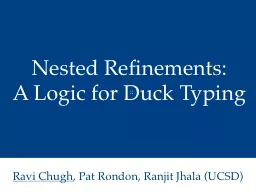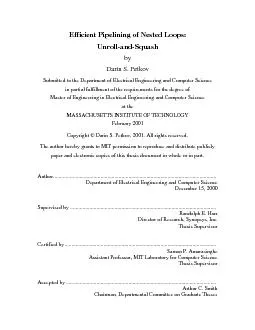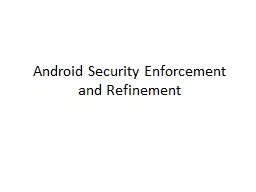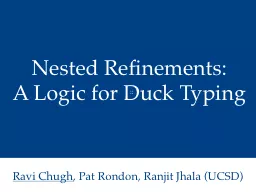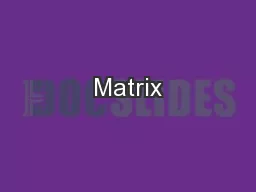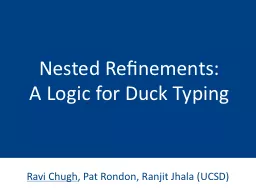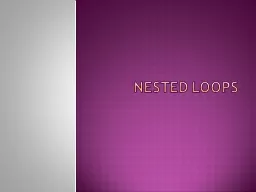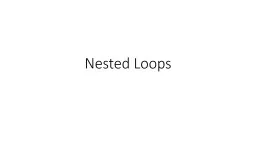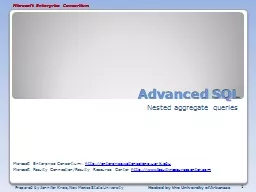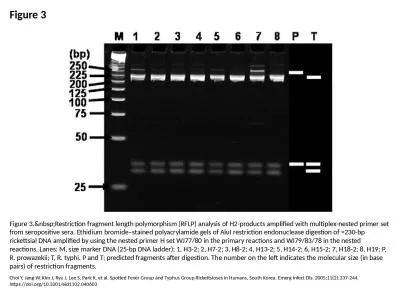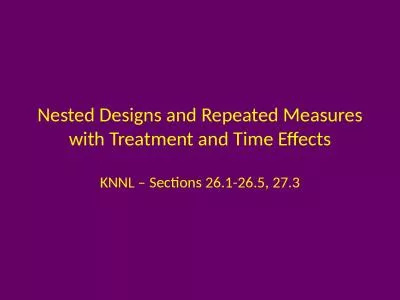PPT-Nested Refinements:
Author : sherrill-nordquist | Published Date : 2016-06-05
A Logic for Duck Typing Ravi Chugh Pat Rondon Ranjit Jhala UCSD 2 What are Dynamic Languages let onto callbacks f obj if f null then new List obj callbacks
Presentation Embed Code
Download Presentation
Download Presentation The PPT/PDF document "Nested Refinements:" is the property of its rightful owner. Permission is granted to download and print the materials on this website for personal, non-commercial use only, and to display it on your personal computer provided you do not modify the materials and that you retain all copyright notices contained in the materials. By downloading content from our website, you accept the terms of this agreement.
Nested Refinements:: Transcript
Download Rules Of Document
"Nested Refinements:"The content belongs to its owner. You may download and print it for personal use, without modification, and keep all copyright notices. By downloading, you agree to these terms.
Related Documents

